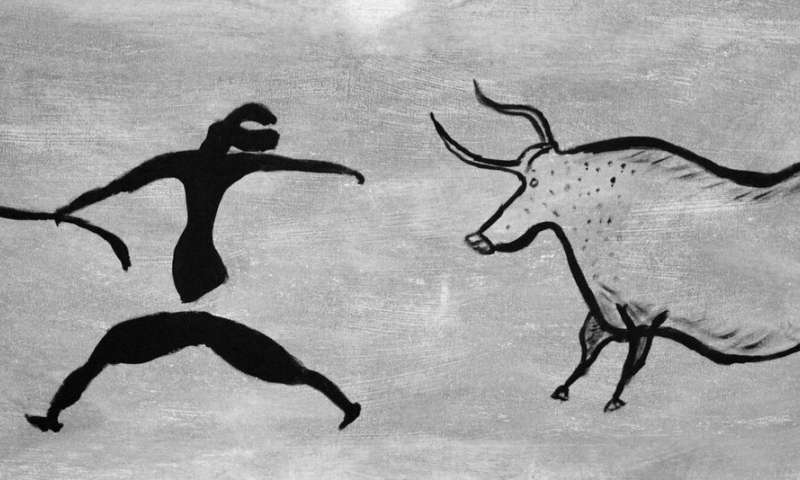Study of stone-age engravings suggests they were created with aesthetic intention

A team of researchers from Denmark, Australia and South Africa has found evidence that suggests stone-age etchings found at two sites in South Africa were created with aesthetic intention and that they evolved over time. In their paper published in Proceedings of the National Academy of Sciences, the group describes experiments they carried out with volunteers looking at reproductions of stone-age engravings and what they learned from them.
Back in 1973, researchers found ostrich eggshell water containers with images etched onto them in the Diepkloof Rock Shelter in western South Africa. Subsequent testing showed the containers to be from approximately 60,000 years ago. Not far away, archaeologists began excavating Blombos Cave in 1991, and during that work, discovered engraved ochre and bones. They were dated to between 100,000 and 70,000 years ago. Notably, the etchings at both sites were made over very long periods of time, allowing researchers to study their evolution. As time passed, the human brain became more sophisticated, allowing humans to express themselves in more tangible form through etchings. In this new effort, the researchers created drawings of the etchings found in both locations and studied them by showing them to volunteers.
In all, the researchers carried out five experiments designed to test the sophistication of the stone-age drawings. The first involved showing volunteers a drawing in one eye and a flickering pattern in the other eye—the researchers timed how long it took the volunteers to identify patterns in the drawings. The images created more recently were more quickly identified as such.
Another test involved showing volunteers two drawings and asking them which they thought was more likely made intentionally—again, those made more recently were identified as likely being intentional.
A third test involved showing volunteers a drawing for just three seconds and then asking them to reproduce it on a piece of paper. Once again, the volunteers were better able to reproduce those images that were created most recently. The fourth test involved asking the volunteers to guess which of two drawings they were shown came from the same site—and once again, they were more accurate when looking at more recently created images. The final test involved asking the volunteers which of two drawings they thought were created more recently; they chose those that had been created more recently. The researchers suggest that the volunteer answers indicated that the engravings were created with aesthetic intention, and clearly evolved in sophistication over time.
More information: Kristian Tylén el al., "The evolution of early symbolic behavior in Homo sapiens," PNAS (2020). www.pnas.org/cgi/doi/10.1073/pnas.1910880117
Journal information: Proceedings of the National Academy of Sciences
No comments:
Post a Comment